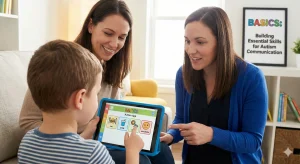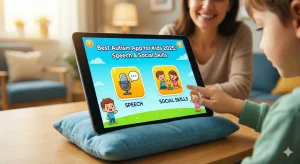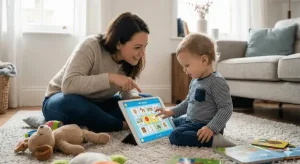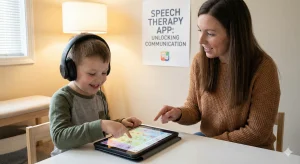How Occupational Therapy Helps Kids With Autism Thrive
By Wellness Hub
Last Updated: October 28, 2025
Every child learns, plays, and grows in their own special way. But for many children on the autism spectrum, simple daily routines—like dressing, playing with friends, or sitting still—can sometimes feel overwhelming. That’s where occupational therapy for autism comes in.
This powerful, science-based therapy helps kids build the confidence, coordination, and emotional balance they need to handle everyday life—at home, in school, and beyond.
What Is Occupational Therapy and Why It Matters for Autism
Occupational therapy (OT) focuses on helping children become more independent in the things they do every day—what therapists call their “occupations.” For kids, those occupations include playing, learning, communicating, and self-care.
When it comes to occupational therapy for autism, the goal is to bridge the gap between what a child wants to do and what they find difficult—like dressing, handwriting, or managing sensory overload.
A qualified occupational therapist guides your child through playful, goal-oriented activities that improve:
- Fine-motor skills: writing, cutting, buttoning
- Sensory processing: calming reactions to sound, touch, or movement
- Self-care routines: dressing, feeding, toileting
- Social participation: attention, turn-taking, and imitation
Try this: Notice which activities your child avoids—like messy play or loud toys. Those are great starting points to discuss with an occupational therapist near you who understands sensory sensitivities.
How Occupational Therapy Supports Core Autism Challenges
Every autistic child’s profile is unique. Some crave constant movement, while others avoid touch or noise. Occupational therapy for autism tailors interventions to each child’s sensory and motor needs.
How OT Helps:
- Improves sensory regulation: Activities like swinging, jumping, or deep-pressure hugs teach the brain to organize sensory input.
- Builds focus and attention: Structured play enhances a child’s ability to follow steps and routines.
- Encourages social play: Therapists model turn-taking and shared enjoyment.
- Promotes independence: Everyday tasks—like feeding and dressing—are broken into small, doable steps.
Parents often notice that with consistent sessions, children become calmer, more engaged, and more confident in their own bodies.
Parent Tip: Pair therapy goals with your child’s favorite themes. For example, use toy cars for obstacle tracks or pretend car washes to practice hand strength.
Common Areas Occupational Therapy Addresses in Autism
Here’s a quick look at how OT translates developmental goals into meaningful play—and how you can reinforce them at home.
| Focus Area | OT Goal | Simple Home Example |
|---|---|---|
| Fine Motor | Hand strength & grip control | Use tongs to pick up pom-poms or coins |
| Sensory Processing | Stay calm with new textures | Try a rice or sand bin for exploration |
| Self-Care | Dress, brush, eat independently | Practice zipping and buttoning daily |
| Gross Motor | Balance & coordination | Create a small obstacle course |
| Social Skills | Play and communication | Play “Simon Says” or build together |
Home-Based Occupational Therapy Strategies Parents Can Try
Occupational therapy doesn’t end in the clinic. What you do at home reinforces your child’s progress more than anything else. Here are simple ideas any parent can use—no fancy tools required!
1. Create a Calm Corner
Pick a cozy space with pillows, dim lighting, and soft textures. Add a weighted blanket or squishy toys. This teaches your child how to self-soothe.
2. Offer Tactile Play
Bins filled with beans, rice, or water beads give safe sensory input and strengthen hand muscles.
3. Add Movement Breaks
Jumping on a mini-trampoline, pushing laundry baskets, or bear walking across a room offers calming “heavy work.”
4. Use Daily Routines as Therapy
Turning dressing or brushing into practice sessions builds self-care independence.
5. Visual Schedules Help
A “First-Then” chart or picture routine supports transitions for kids who need predictability.
Also read: Easy OT Activities at Home for Kids with Autism
How Play Turns Therapy into Learning
Play is at the heart of pediatric occupational therapy. For children with autism, play becomes the bridge between therapy and real-life learning.
Why Play Works:
- Pretend play improves imagination and emotional understanding.
- Construction and craft games enhance planning and finger strength.
- Turn-taking builds patience and cooperation.
- Physical play (like hopping or catching) develops motor coordination.
Home Tip: Turn therapy into “family playtime.” Ten minutes of joint play daily creates joy, connection, and learning—all in one.
When to Seek Professional Occupational Therapy Help
While home practice is powerful, some challenges need expert guidance.
Consider an occupational therapy evaluation if your child:
- Overreacts to sounds, textures, or movements
- Avoids touching messy or wet materials
- Struggles with feeding, writing, or dressing
- Has poor balance or coordination
- Tires easily or melts down in new situations
Early intervention—especially between ages 2 and 5—leads to lasting progress in regulation and independence.
Collaborating with Therapists and Schools
Progress is fastest when parents, teachers, and therapists work together.
Stay in touch with your OT, share school feedback, and align home routines with therapy goals.
Simple ways to collaborate:
- Ask for a weekly home-practice sheet.
- Coordinate sensory supports (like fidget tools) with teachers.
- Keep an “OT notebook” that travels between home and school.
Empowering Parents to Continue Therapy at Home
You don’t have to be a professional to make a difference.
Small, consistent actions from parents transform therapy into everyday learning.
Parent Empowerment Tips:
- Keep routines visual and predictable.
- Praise effort, not perfection.
- Involve siblings in fun practice.
- Reuse household materials—spoons, pegs, cushions—for skill games.
- Take breathers for yourself too: calm parent = calm child.
Conclusion:
Occupational therapy isn’t just about sessions at a clinic — it’s about helping your child discover joy, confidence, and independence in everyday life. Whether it’s learning to dress, calming down after a busy day, or joining in play with friends, every small step forward matters.
With consistent support, home-based strategies, and the right professional guidance, children with autism can thrive in ways that once felt out of reach. If you’re ready to begin, look for a trusted occupational therapy near me provider or explore occupational therapy in Hyderabad centers that focus on parent-led, play-based growth.
Frequently Asked Questions:
1. What is occupational therapy for autism?
Occupational therapy for autism helps children learn daily life skills like eating, dressing, writing, and playing. It also supports sensory needs and helps them stay calm and focused at home and school.
2. How does occupational therapy help a child with autism?
It improves hand strength, attention, and body awareness. Through fun, play-based activities, therapists teach children how to manage emotions, follow routines, and do everyday tasks with more confidence.
3. At what age should a child with autism start occupational therapy?
Early intervention works best. Many children start occupational therapy between ages 2 and 5 to build strong sensory and motor foundations. But it can help at any age.
4. Can parents do occupational therapy at home?
Yes! Many therapists share simple home plans. Parents can use common items like rice bins, swings, and clothespins to build fine-motor and sensory skills through play.
5. How do I find good occupational therapy near me?
You can search online for occupational therapy near me or ask your child’s doctor for trusted referrals. Look for certified pediatric occupational therapists with experience in autism support.
6. What are the signs my child needs occupational therapy?
Some signs include trouble with feeding, dressing, writing, or balance. Other signs may be avoiding touch, loud sounds, or certain textures. If you notice these often, an OT evaluation can help.
7. Can occupational therapy improve speech and communication?
Yes, indirectly. By improving sensory control, attention, and body awareness, OT helps children focus better and prepare for speech and language therapy.
8. What happens during an occupational therapy session?
Each session is playful and goal-based. Children may swing, build puzzles, practice zipping, or do calming exercises. Therapists use fun to teach important daily skills.
9. How long does it take to see results from occupational therapy?
Every child is different. With regular sessions and home practice, parents often see small improvements in focus, calmness, or coordination within 3 to 6 months.
10. Are there good occupational therapy centers in Hyderabad?
Yes, there are many trusted occupational therapy Hyderabad clinics with certified pediatric OTs. They often combine sensory integration, play therapy, and parent coaching for the best results.
About Author:
Sonali Sharma, Occupational Therapist
Sonali Sharma is a skilled Occupational Therapist at Wellness Hub, with over three years of experience in supporting children with developmental, behavioral, and learning challenges. She holds a Bachelor’s in Occupational Therapy (BOT) from Amity University and has worked with leading institutions such as NIMHANS Bengaluru and ESIC Hospital Faridabad.
At Wellness Hub, Sonali provides online occupational therapy sessions tailored to each child’s needs. She specializes in pediatric therapy, autism support, sensory integration, and developmental skill-building, helping children strengthen motor skills, improve focus, and become more independent in daily life.
Her therapy style is child-centered, play-based, and evidence-driven—making sessions both effective and enjoyable for kids. Sonali also equips parents with practical home therapy strategies to extend progress beyond sessions.
Passionate about empowering families, Sonali believes in creating a nurturing space where children can thrive while parents feel supported every step of the way.
Book your Free Consultation Today
Parent/Caregiver Info:
Client’s Details:
* Error Message








